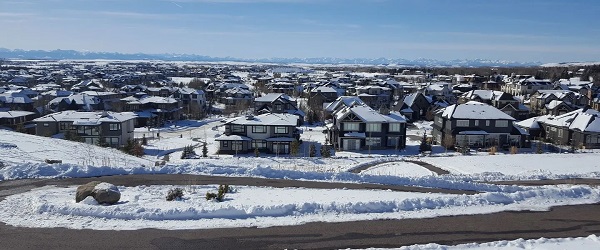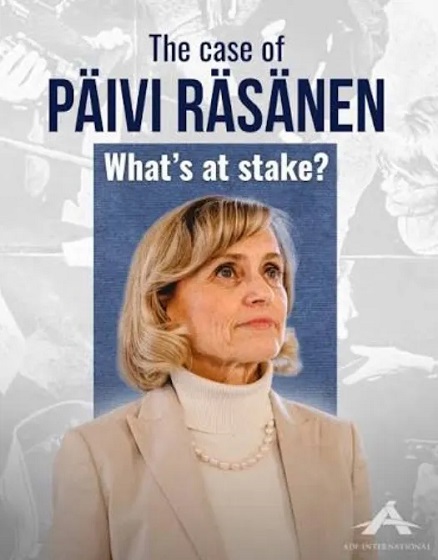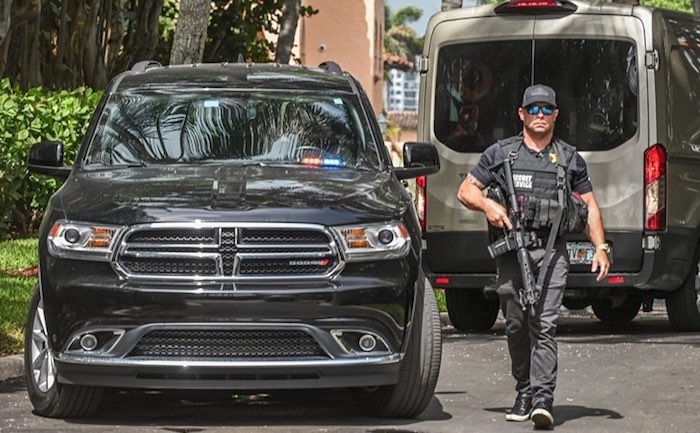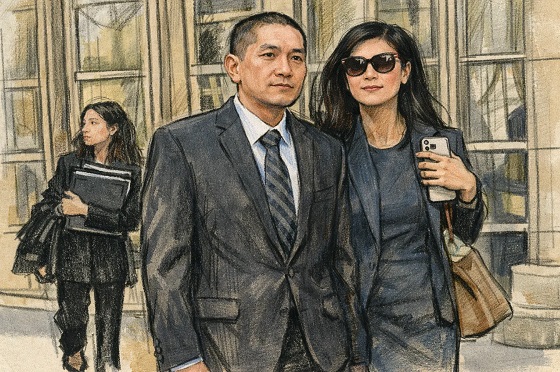Calgary
Black Lives Matter: What would Martin Luther King Jr Say?

All over the world people are taking to the streets in support of the Black Lives Matter movement. Millions of people in hundreds of cites are marching in support of the idea that all people are created equal and deserve equal treatment. I can’t help but wonder what Martin Luther King Jr would think about these current events. How close are we to his dream of children being judged by the content of their character rather than the colour of their skin?
Today, MLK is hailed as a hero of civil rights. He has streets and schools named after him all over the US. Politicians of all backgrounds quote his work and hail him as a hero. But in the 1950s and 1960s, he was an enemy of the US Government. The FBI was actively spying on MLK, labelling him as an extremist. The director of the FBI, J. Edgar Hoover claimed that MLKs followers were communists and that MLK himself was the “most notorious liar in the country.” The lesson here is that those who speak out against injustice are seen as an enemy to those who are responsible for the injustice.
This is a lesson that Colin Kaepernick learned first-hand. A star quarterback for the San Francisco 49ers, he made headlines in 2016 by sitting during the national anthem to bring awareness to the issue of police brutality against minorities in America. This idea spread and that season saw many players taking a knee instead of standing for the national anthem.
“I am not going to stand up to show pride in a flag for a country that oppresses black people and people of colour. To me, this is bigger than football and it would be selfish on my part to look the other way. There are bodies in the street and people getting paid leave and getting away with murder” – Colin Kaepernick
Some people said he was disrespecting the flag by kneeling. Others said he was expressing his First Amendment rights to free speech. Like MLK, he was protesting against the injustice that he saw in society. There is no question that his actions were polarizing and shocking to many. There is also no question that his actions cost him his career.
This year, another situation regarding ‘kneeling’ made the news. On May 25th, cellphone video showing police officer Derek Chauvin kneeling on Goerge Floyd’s neck circulated on social media. For nearly 9 minutes the office kept his knee on Mr. Floyd’s neck, despite him saying he couldn’t breathe. George Floyd died with his hands handcuffed behind his back, his face on the street and a knee on his neck.
This was the sort of event that Colin Kaepernick was kneeling about. This was why he was protesting. He wanted to bring attention to the fact that unjust treatment was a common occurrence in the lives of minority Americans; that the police have been harming the very civilians they had sworn to protect.
A police force is a group of people empowered by a state to ensure the safety and health of that state’s citizens by enforcing the laws of the land. This is in contrast to a military force, whose purpose is to destroy the enemies of that same state. The uncomfortable truth is that, for decades, the police in the US have become more and more militarized. To the casual observer, a police officer in riot gear looks very similar to a combat soldier. Starting in the 1990s, police departments in the US have been buying equipment directly from the Department of Defence, blurring the lines between law enforcement and warfare.
In 2019, the police forces in the US killed 1,004 civilians.
This puts US law enforcement killings in the same rank as Syria, Nigeria, Pakistan, and South Africa.
When compared to G7 countries the numbers are truly appalling. In 2013, France had 14 deaths as a result of police action. In 2017, Canada had 36 deaths and Australia had 4. In England, the police only had 7 incidences where a firearm was discharged in all of 2016, resulting in 3 deaths.
The US police force is no longer protecting the public, they are fighting against them.
This year has provided a mountain of evidence that this is true. There are hundreds of videos of police driving into protesters, pushing people over, firing tear gas into crowds and arresting without provocation. They are indiscriminately targeting anyone in their path including journalists. So far in 2020, 98 journalists have been attacked by police and 29 of them have been arrested.
These are the statistics we expect from a war-torn nation, not a modern democracy. This is why Colin Kaepernick was kneeling. This is why he decided to speak up. He had heard stories from black neighbourhoods and poor communities where this was happening and he couldn’t stay silent. The police in the US were no longer protecting civilians, they were attacking them.
For years, activists have been trying to bring this to the attention of the public. This was the message that MLK was trying to bring to white Americans. They have been pleading for people to understand that in many areas in the US, the police are treating neighbourhoods like warzones, not communities. They have been trying to get people to see what was really going on. But because it didn’t directly affect affluent white males, we didn’t listen.
It took the death of George Floyd for the public to notice and the Black Lives Matter movement to gain widespread support. The protestors are picking up where MLK left off. Not only did Dr. King have a dream of equality, but he was a supporter of action and civil disobedience to achieve that equality.
“We who engage in nonviolent direct action are not the creators of tension. We merely bring to the surface the hidden tension that is already alive.” – Martin Luther King Jr
As paramilitary police forces are beating and attacking civilians in the streets, many are calling for the de-militarization and de-funding of police forces.
But what would that look like?
To be clear, this isn’t a call to dissolve the police, but rather to reallocate funds away from armoured cars and riot gear to community programs and schools. The model that activists point to is a white suburban neighbourhood. In these communities, there are clean playgrounds, after school activities, team sports, and busy community centers. Police work with social workers and health professionals to ensure citizens are taken care of and people’s needs are met. This leads to lower crime and removes the need for heavily armed patrols.
Instead of treating poor neighbourhoods like combat zones and minorities as hostiles, how about treating them like people who are trying to make a living in their community. Start a dialogue and listen to what they need to improve their lives. Help develop programs and policies that will make real changes for them. Give them an opportunity to show you the content of their character.
I think that will go a long way to making Dr. King’s dream come true.
For more stories, visit Todayville Calgary.
Is Police Brutality a Racial Issue simply because the Media says so?
Alberta
Calgary mayor should retain ‘blanket rezoning’ for sake of Calgarian families

From the Fraser Institute
By Tegan Hill and Austin Thompson
Calgary’s new mayor, Jeromy Farkas, has promised to scrap “blanket rezoning”—a policy enacted by the city in 2024 that allows homebuilders to construct duplexes, townhomes and fourplexes in most neighbourhoods without first seeking the blessing of city hall. In other words, amid an affordability crunch, Mayor Farkas plans to eliminate a policy that made homebuilding easier and cheaper—which risks reducing housing choices and increasing housing costs for Calgarian families.
Blanket rezoning was always contentious. Debate over the policy back in spring 2024 sparked the longest public hearing in Calgary’s history, with many Calgarians airing concerns about potential impacts on local infrastructure, parking availability and park space—all important issues.
Farkas argues that blanket rezoning amounts to “ignoring the community” and that Calgarians should not be forced to choose between a “City Hall that either stops building, or stops listening.” But in reality, it’s virtually impossible to promise more community input on housing decisions and build more homes faster.
If Farkas is serious about giving residents a “real say” in shaping their neighbourhood’s future, that means empowering them to alter—or even block—housing proposals that would otherwise be allowed under blanket rezoning. Greater public consultation tends to give an outsized voice to development opponents including individuals and groups that oppose higher density and social housing projects.
Alternatively, if the mayor and council reform the process to invite more public feedback, but still ultimately approve most higher-density projects (as was the case before blanket rezoning), the consultation process would be largely symbolic.
Either way, homebuilders would face longer costlier approval processes—and pass those costs on to Calgarian renters and homebuyers.
It’s not only the number of homes that matters, but also where they’re allowed to be built. Under blanket rezoning, builders can respond directly to the preferences of Calgarians. When buyers want duplexes in established neighbourhoods or renters want townhomes closer to work, homebuilders can respond without having to ask city hall for permission.
According to Mayor Farkas, higher-density housing should instead be concentrated near transit, schools and job centres, with the aim of “reducing pressure on established neighbourhoods.” At first glance, that may sound like a sensible compromise. But it rests on the flawed assumption that politicians and planners should decide where Calgarians are allowed to live, rather than letting Calgarians make those choices for themselves. With blanket rezoning, new homes are being built in areas in response to buyer and renter demand, rather than the dictates of city hall. The mayor also seems to suggest that city hall should thwart some redevelopment in established neighbourhoods, limiting housing options in places many Calgarians want to live.
The stakes are high. Calgary is not immune to Canada’s housing crisis, though it has so far weathered it better than most other major cities. That success partly reflects municipal policies—including blanket rezoning—that make homebuilding relatively quick and inexpensive.
A motion to repeal blanket rezoning is expected to be presented to Calgary’s municipal executive committee on Nov. 17. If it passes, which is likely, the policy will be put to a vote during a council meeting on Dec. 15. As the new mayor and council weigh changes to zoning rules, they should recognize the trade-offs. Empowering “the community” may sound appealing, but it may limit the housing choices available to families in those communities. Any reforms should preserve the best elements of blanket rezoning—its consistency, predictability and responsiveness to the housing preferences of Calgarians—and avoid erecting zoning barriers that have exacerbated the housing crisis in other cities.

Austin Thompson
Alberta
Gondek’s exit as mayor marks a turning point for Calgary

This article supplied by Troy Media.
The mayor’s controversial term is over, but a divided conservative base may struggle to take the city in a new direction
Calgary’s mayoral election went to a recount. Independent candidate Jeromy Farkas won with 91,112 votes (26.1 per cent). Communities First candidate Sonya Sharp was a very close second with 90,496 votes (26 per cent) and controversial incumbent mayor Jyoti Gondek finished third with 71,502 votes (20.5 per cent).
Gondek’s embarrassing tenure as mayor is finally over.
Gondek’s list of political and economic failures in just a single four-year term could easily fill a few book chapters—and most likely will at some point. She declared a climate emergency on her first day as Calgary’s mayor that virtually no one in the city asked for. She supported a four per cent tax increase during the COVID-19 pandemic, when many individuals and families were struggling to make ends meet. She snubbed the Dec. 2023 menorah lighting during Hanukkah because speakers were going to voice support for Israel a mere two months after the country was attacked by the bloodthirsty terrorist organization Hamas. The
Calgary Party even accused her last month of spending over $112,000 in taxpayers’ money for an “image makeover and brand redevelopment” that could have benefited her re-election campaign.
How did Gondek get elected mayor of Calgary with 176,344 votes in 2021, which is over 45 per cent of the electorate?
“Calgary may be a historically right-of-centre city,” I wrote in a recent National Post column, “but it’s experienced some unusual voting behaviour when it comes to mayoral elections. Its last three mayors, Dave Bronconnier, Naheed Nenshi and Gondek, have all been Liberal or left-leaning. There have also been an assortment of other Liberal mayors in recent decades like Al Duerr and, before he had a political epiphany, Ralph Klein.”
In fairness, many Canadians used to support the concept of balancing their votes in federal, provincial and municipal politics. I knew of some colleagues, friends and family members, including my father, who used to vote for the federal Liberals and Ontario PCs. There were a couple who supported the federal PCs and Ontario Liberals in several instances. In the case of one of my late
grandfathers, he gave a stray vote for Brian Mulroney’s federal PCs, the NDP and even its predecessor, the Co-operative Commonwealth Federation.
That’s not the case any longer. The more typical voting pattern in modern Canada is one of ideological consistency. Conservatives vote for Conservative candidates, Liberals vote for Liberal candidates, and so forth. There are some rare exceptions in municipal politics, such as the late Toronto mayor Rob Ford’s populistconservative agenda winning over a very Liberal city in 2010. It doesn’t happen very often these days, however.
I’ve always been a proponent of ideological consistency. It’s a more logical way of voting instead of throwing away one vote (so to speak) for some perceived model of political balance. There will always be people who straddle the political fence and vote for different parties and candidates during an election. That’s their right in a democratic society, but it often creates a type of ideological inconsistency that doesn’t benefit voters, parties or the political process in general.
Calgary goes against the grain in municipal politics. The city’s political dynamics are very different today due to migration, immigration and the like. Support for fiscal and social conservatism may still exist in Alberta, but the urban-rural split has become more profound and meaningful than the historic left-right divide. This makes the task of winning Calgary in elections more difficult for today’s provincial and federal Conservatives, as well as right-leaning mayoral candidates.
That’s what we witnessed during the Oct. 20 municipal election. Some Calgary Conservatives believed that Farkas was a more progressive-oriented conservative or centrist with a less fiscally conservative plan and outlook for the city. They viewed Sharp, the leader of a right-leaning municipal party founded last December, as a small “c” conservative and much closer to their ideology. Conversely, some Calgary Conservatives felt that Farkas, and not Sharp, would be a better Conservative option for mayor because he seemed less ideological in his outlook.
When you put it all together, Conservatives in what used to be one of the most right-leaning cities in a historically right-leaning province couldn’t decide who was the best political option available to replace the left-wing incumbent mayor. Time will tell if they chose wisely.
Fortunately, the razor-thin vote split didn’t save Gondek’s political hide. Maybe ideological consistency will finally win the day in Calgary municipal politics once the recount has ended and the city’s next mayor has been certified.
Michael Taube is a political commentator, Troy Media syndicated columnist and former speechwriter for Prime Minister Stephen Harper. He holds a master’s degree in comparative politics from the London School of Economics, lending academic rigour to his political insights.
Troy Media empowers Canadian community news outlets by providing independent, insightful analysis and commentary. Our mission is to support local media in helping Canadians stay informed and engaged by delivering reliable content that strengthens community connections and deepens understanding across the country
-

 Health2 days ago
Health2 days agoFDA warns ‘breast binder’ manufacturers to stop marketing to gender-confused girls
-

 Uncategorized23 hours ago
Uncategorized23 hours agoMortgaging Canada’s energy future — the hidden costs of the Carney-Smith pipeline deal
-

 Agriculture2 days ago
Agriculture2 days agoSupply Management Is Making Your Christmas Dinner More Expensive
-

 International2 days ago
International2 days ago2025: The Year The Narrative Changed
-

 Business1 day ago
Business1 day agoThere’s No Bias at CBC News, You Say? Well, OK…
-

 Daily Caller2 days ago
Daily Caller2 days agoTrump Reportedly Escalates Pressure On Venezuela With Another Oil Tanker Seizure
-

 International23 hours ago
International23 hours agoAustralian PM booed at Bondi vigil as crowd screams “shame!”
-

 Opinion1 day ago
Opinion1 day agoReligion on trial: what could happen if Canada passes its new hate speech legislation











